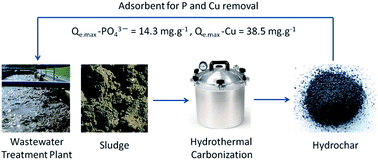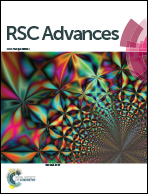Enhanced adsorption of orthophosphate and copper onto hydrochar derived from sewage sludge by KOH activation
Abstract
Hydrothermal carbonization producing hydrochar from organic waste is increasingly gaining attention to deal with the challenge of excess waste activated sludge produced during centralized aerobic wastewater treatment. Hydrochar is used as an adsorbent for the removal of organics, metals and biotic contaminants. This study demonstrated the application of KOH activated hydrochar, called enhanced hydrochar (EHC) derived from sewage sludge, for the removal of orthophosphate from wastewater by means of batch adsorption, zetametry and infrared spectroscopy. The maximum Qe-PO43− of EHC was 14.3 mg orthophosphate adsorbed per g of EHC when the initial orthophosphate concentration was increased to 150 mg L−1. The application of orthophosphate removal by EHC from the effluent of a constructed wetland was demonstrated by achieving more than 97% orthophosphate removal at an EHC dosage of 6.0 g L−1 and an initial orthophosphate concentration of 13.1 mg L−1. pH dependent adsorption experiments and infrared spectroscopy showed the orthophosphate removal by EHC was due to the replacement of hydroxyl groups by orthophosphate in the EHC. Acid–base titration showed the KOH washing of the raw hydrochar (RHC) led to a 1.7 times increase in the hydroxyl groups in EHC compared to RHC. This study further confirmed the higher uptake capacity of EHC compared to RHC towards copper as a model divalent cation. EHC can thus be applied for the removal of both anions (orthophosphate) and cations (copper) from wastewater.


 Please wait while we load your content...
Please wait while we load your content...